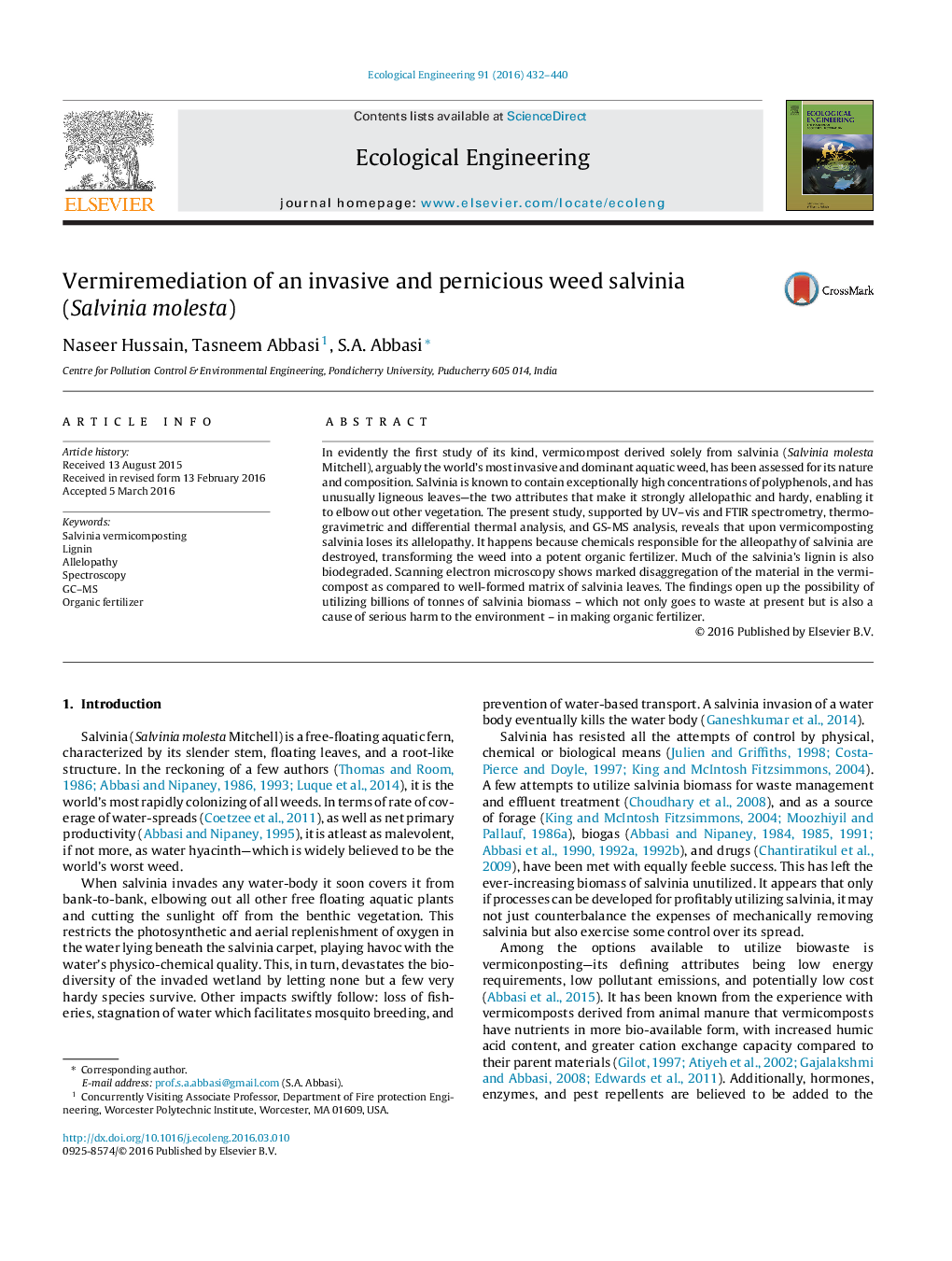| Article ID | Journal | Published Year | Pages | File Type |
|---|---|---|---|---|
| 6301372 | Ecological Engineering | 2016 | 9 Pages |
Abstract
In evidently the first study of its kind, vermicompost derived solely from salvinia (Salvinia molesta Mitchell), arguably the world's most invasive and dominant aquatic weed, has been assessed for its nature and composition. Salvinia is known to contain exceptionally high concentrations of polyphenols, and has unusually ligneous leaves-the two attributes that make it strongly allelopathic and hardy, enabling it to elbow out other vegetation. The present study, supported by UV-vis and FTIR spectrometry, thermogravimetric and differential thermal analysis, and GS-MS analysis, reveals that upon vermicomposting salvinia loses its allelopathy. It happens because chemicals responsible for the alleopathy of salvinia are destroyed, transforming the weed into a potent organic fertilizer. Much of the salvinia's lignin is also biodegraded. Scanning electron microscopy shows marked disaggregation of the material in the vermicompost as compared to well-formed matrix of salvinia leaves. The findings open up the possibility of utilizing billions of tonnes of salvinia biomass - which not only goes to waste at present but is also a cause of serious harm to the environment - in making organic fertilizer.
Related Topics
Life Sciences
Agricultural and Biological Sciences
Ecology, Evolution, Behavior and Systematics
Authors
Naseer Hussain, Tasneem Abbasi, S.A. Abbasi,
